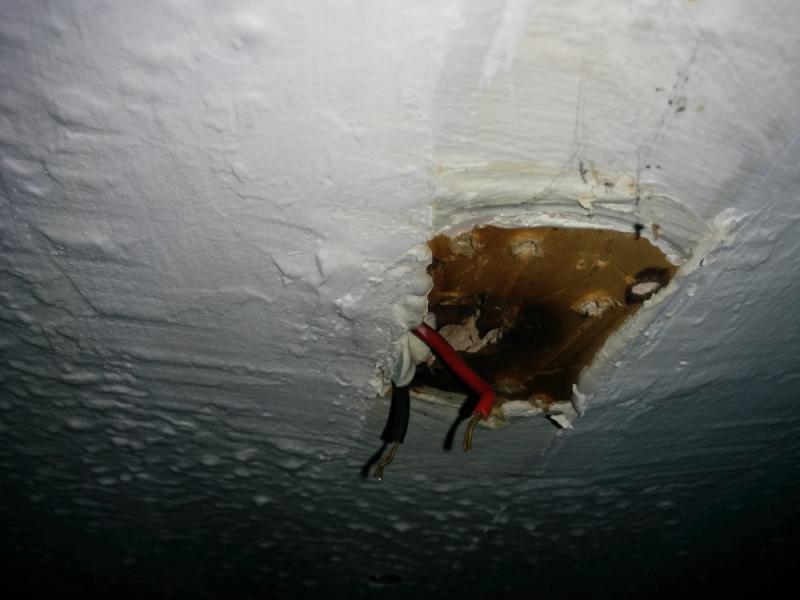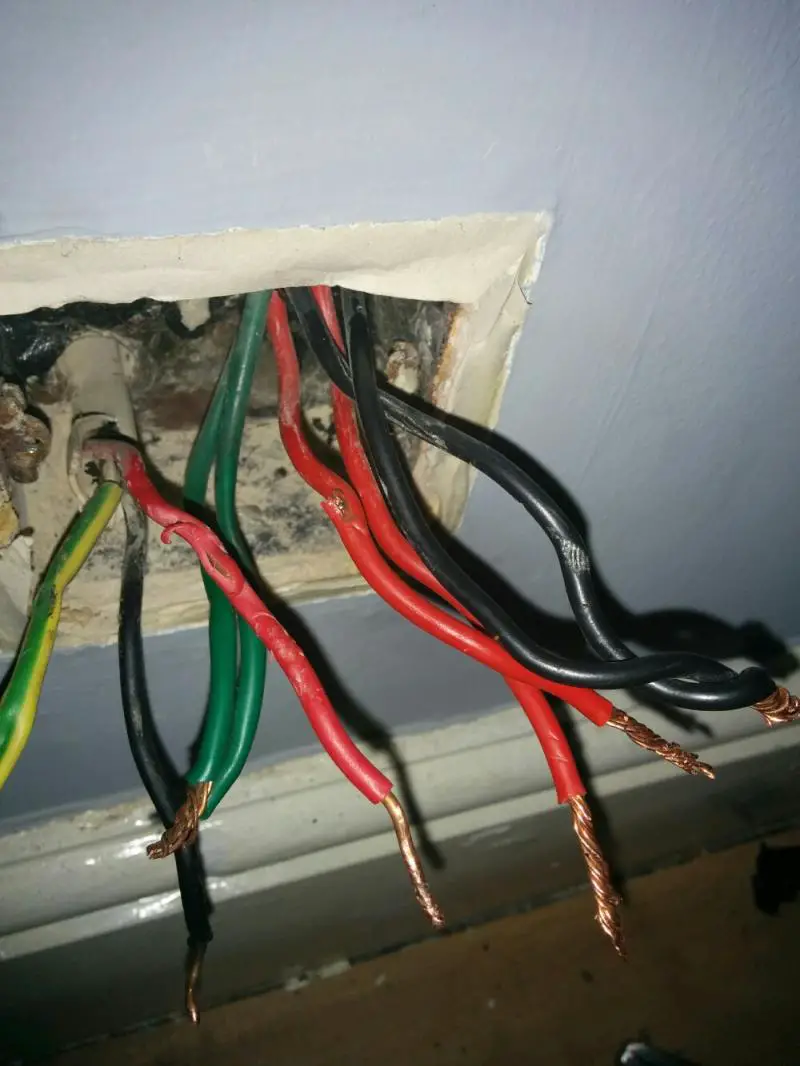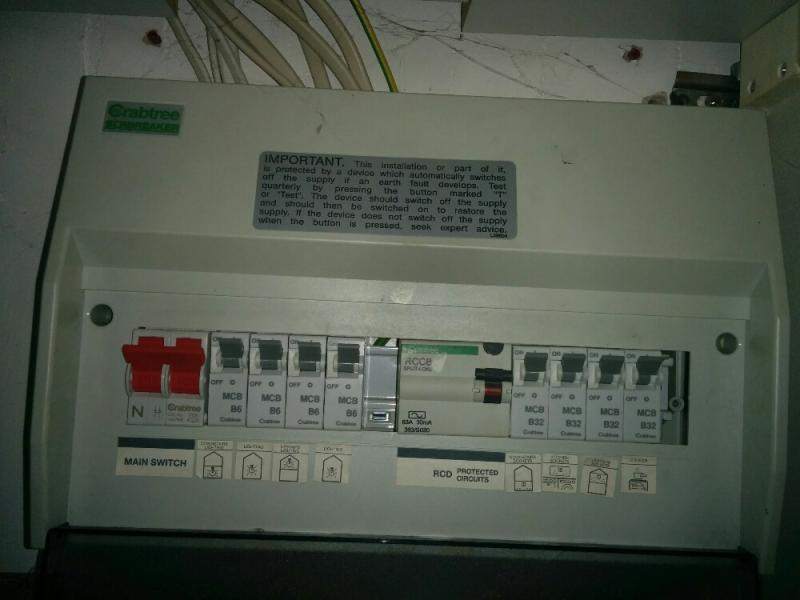Just moved house (early 80s built IIRC), and replacing some of the lights, switches etc, but hoping not to have to do any rewiring. I'm a novice at this so I'm not sure if this is the sort of thing to expect. (though I know a small amount of electrical theory, I haven't messed with much real world wiring before.)
It seems the previous owners/fitters had a terrible fear of earth connections, and were working hard to make sure they didn't make contact with any metal surfaces. This seems to have been enforced in all the metal switch plates, metal light fittings, and probably in the metal socket plates too (I haven't had time to check these yet).
After removing a kitchen light, I found it connected by thin choc block to less than an inch of wire pair coming out of a ball of mastic and plaster partly blocking a hole in the ceiling. One of the strands of each wire had been cut or broken off - maybe to make it easier to bend into the choc block.
There was an earth connector on the metal body of the light fixing, but no visible earth wire. I assumed it was just old wiring without an earth, and tried to reconnect the choc block to put things back, at which point the exposed wire sheared off at the sleeving from where it had been overly stressed.
On further inspection, poking, prodding and pulling out chunks of mastic and ceiling, I found that there was in fact plenty of cable up there, but that someone had intentionally fixed it in to be that short.
There was also a bit of black electrical tape wound around the end of the insulation, which contained the earth wire, bent back along the cable.
Eventually got this all hooked up, earth connected, and working, but I probably should stay away from electrics because this sort of thing makes me wonder what's happening with the bits I can't see.
Now I'm wondering if the earth wire is even connected to anything on the other end. Maybe I'm going around fixing up earth wires which just go into a bundle of electrical tape somewhere in the walls
Oh and I just found a socket with 3 doubles spurred off it which I'm trying not to think about too much. I'm slightly scared I'll find that all the socket earth pins throughout the house have been (safely ) isolated from earth too...
) isolated from earth too...
The other thing I'm trying not to think too hard about is the oven tripping out at random times although maybe that's encouraging though, as it means some safety features work.
It seems the previous owners/fitters had a terrible fear of earth connections, and were working hard to make sure they didn't make contact with any metal surfaces. This seems to have been enforced in all the metal switch plates, metal light fittings, and probably in the metal socket plates too (I haven't had time to check these yet).
After removing a kitchen light, I found it connected by thin choc block to less than an inch of wire pair coming out of a ball of mastic and plaster partly blocking a hole in the ceiling. One of the strands of each wire had been cut or broken off - maybe to make it easier to bend into the choc block.
There was an earth connector on the metal body of the light fixing, but no visible earth wire. I assumed it was just old wiring without an earth, and tried to reconnect the choc block to put things back, at which point the exposed wire sheared off at the sleeving from where it had been overly stressed.
On further inspection, poking, prodding and pulling out chunks of mastic and ceiling, I found that there was in fact plenty of cable up there, but that someone had intentionally fixed it in to be that short.
There was also a bit of black electrical tape wound around the end of the insulation, which contained the earth wire, bent back along the cable.
Eventually got this all hooked up, earth connected, and working, but I probably should stay away from electrics because this sort of thing makes me wonder what's happening with the bits I can't see.
Now I'm wondering if the earth wire is even connected to anything on the other end. Maybe I'm going around fixing up earth wires which just go into a bundle of electrical tape somewhere in the walls
Oh and I just found a socket with 3 doubles spurred off it which I'm trying not to think about too much. I'm slightly scared I'll find that all the socket earth pins throughout the house have been (safely
The other thing I'm trying not to think too hard about is the oven tripping out at random times although maybe that's encouraging though, as it means some safety features work.





